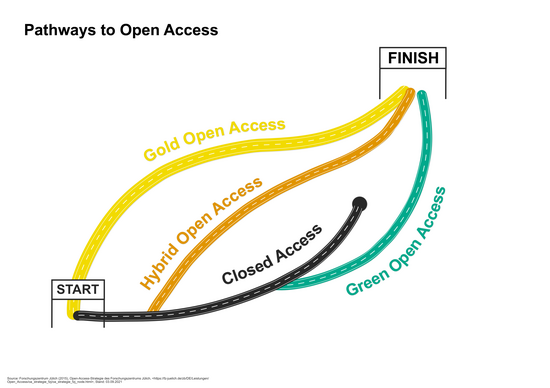Open Access enables barrier-free access to academic information such as journal articles, books, dissertations, conference proceedings etc. Open Access publications are freely available and may be used freely.
Creative Commons licences provide the legal structure to define the terms of use, while the copyright remains with the authors. There are various Creative Commons licences. The most important licences for open access are CC-BY and CC-BY-SA. These licences allow unrestricted distribution on condition that the authorship is correctly cited. In addition, with CC-BY-SA the work must be distributed under the same licence.


